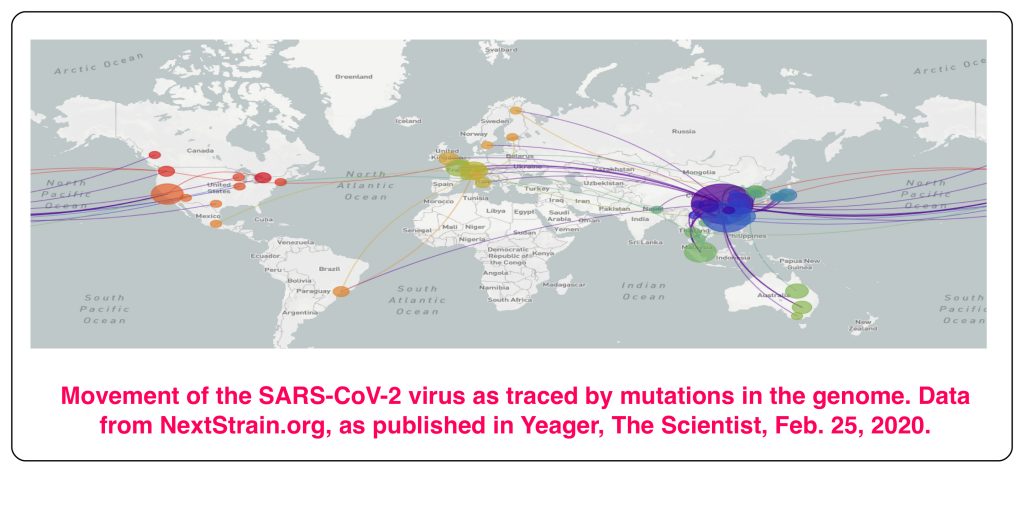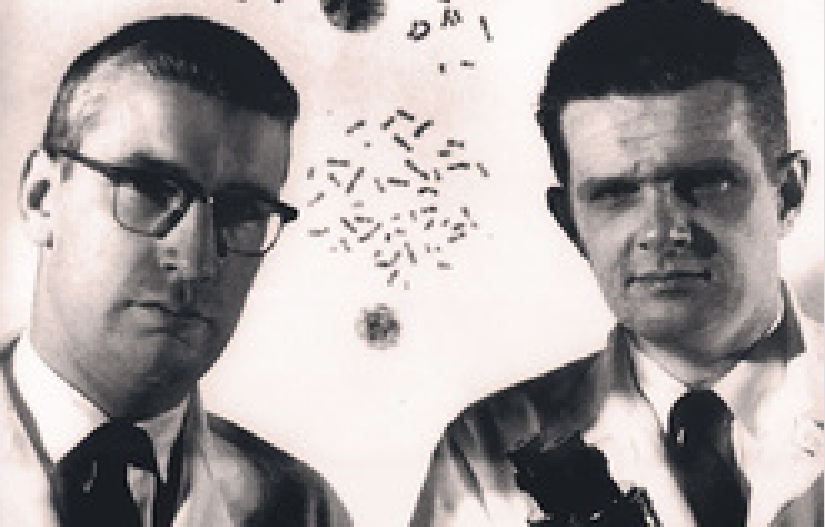As of March 4, 2020 the novel coronavirus SARS-CoV-2, which causes COVID-19, has spread to more than 77 countries. More than 93,000 cases have been reported, and just under 3,200 deaths. It’s thought that the virus infected its first human victim in the city of Wuhan in China, in November, 2019. That case was apparently caused by transmission of SARS-CoV-2 from an animal. Since then, it has spread by human-to-human contact. The virus probably originated in bats, and then likely passed through another animal before it found its human host.… Read the rest “The Drift of Coronavirus”
genetics
The Curious Case of the Friendly Russian Foxes
Dr. Lyudmila Trut and a human-friendly fox, 1974.
Foxes have a reputation for being elusive, canny, shy. . . in other words, foxy. Wild foxes in captivity are innately aggressive and fearful of humans – not friendly at all. With a great deal of patience, you may be able train one to be more docile, but it would not be a dog-like pet. However, if you have a slightly weird desire for a pet fox that will behave more like a cocker spaniel than a wild fox, you may be able to get one from a genetic research institute in Russia.… Read the rest “The Curious Case of the Friendly Russian Foxes”
Why there is so much talk about Epigenetics
In April 2017 I published a post titled “Why is there so much talk about Epigenetics?”. I think I did a pretty decent job explaining what Epigenetics is, and why it is such a critically important part of biology. The gist is, that the regulated output of our genomic information depends on Epigenetics. This is achieved by specific chemical groups and protein along the chromosomes that control their expression into the proteins and other products needed for the life of a particular cell.… Read the rest “Why there is so much talk about Epigenetics”
Chronic Myeloid Leukemia: a Molecular Diagnosis
Peter Nowell and David Hungerford in 1960
Chronic Myeloid Leukemia (CML) is not a cancer you hear about very often. That’s not because it isn’t serious — until recently, it carried a frightening prognoses. Until about 2000, newly diagnosed CML patients had a 5-year survival rate of 31%. But we don’t hear much about CML because it is a rare disease, and affects far fewer people than cancers of the breast or prostate, or lung cancer.… Read the rest “Chronic Myeloid Leukemia: a Molecular Diagnosis”
Chronic Myeloid Leukemia: A Molecular Solution
Dr. Brian Druker and Ms. LaDonna Lopossa, one of the earliest patients to benefit from Gleevec
Rob Schick is the Branch Manger of the Baird Wealth Management Group in Portland, Oregon. Most people would probably consider him lucky. For starters, Portland is one of the most desirable cities in the United States to live in. He and his wife have three grown children, one of whom works at the same company. In addition to his success in business, Rob Schick’s efforts on behalf of the Knight Cancer Institute, where he has helped raise millions of dollars for research, were nationally recognized in 2015 by a National Community Service Award from the Invest in Others Foundation.… Read the rest “Chronic Myeloid Leukemia: A Molecular Solution”
Speed Limits
Jesse Owens starting the 200 meter race at the 1936 Olympics. Reproduction of photograph in “Die Olympischen Spiele, 1936” p.27, 1936.
Coverage of the recent victory of the New Zealand team in the America’s Cup yacht race featured sailboats flying along on their underwater foils at ridiculous speed, speeds reaching more than 50 miles (80 km) per hour. Whether it’s running, or driving a car, or sailing these mutant boats, speed is exciting.… Read the rest “Speed Limits”
GMO
It’s a good idea to look critically at any powerful new technology, and the creation of genetically-modified organisms, GMOs, is no exception. Like any new technology, it might have unanticipated, deleterious consequences that outweigh any benefit. Many criticisms of GMO have of course been raised, as a brief interrogation of the internet will show. But unfortunately, the criticisms of GMOs we hear most often are not the most important ones, and the ones that are most important are often not heard clearly.… Read the rest “GMO”
Mice and Men
(C57 Black/6 mouse) Attacking cancer with the immune system is one of the most enticing dreams of cancer researchers and oncologists. This dream has floated in and out of the foreground for over a century; as early as the 1890s, such a mechanism was probably responsible for a number of “miracle” cancer cures, even if the immune system was still much of a mystery. Since then, the dream of cancer immunotherapy has offered up promising results, but has never fully revealed itself.… Read the rest “Mice and Men”
Circadian Rhythm II – Us
Some people have a hard time keeping to the conventional clock. They strongly prefer to sleep and stay up late. Some people show the opposite behaviour; they wake up very early, but are ready for bed well before the late evening news. Although there may be exceptions (teenagers and jazz musicians come to mind), both kinds of behaviour are often related to a changed circadian rhythm. Late sleepers are referred to as “delayed phase” in their circadian rhythm, while those who are exceptionally early to bed – early to rise are said to have “Familial Advanced Sleep Phase Syndrome” (FASPS).… Read the rest “Circadian Rhythm II – Us”
Life Expectancy II: It’s in the Genes
(Microscopic image of C. elegans with Nomarski DIC optics: by permission, Prof. Sander van den Heuvel, Developmental Biology, Universiteit Utrecht. About 200x lifesize.)
How long can we expect to live in the future? The longest recorded human life is that of a French woman, Jeanne Calment, who died aged 122 and a half, in 1997. The eighth oldest, and currently oldest living person, is an Italian woman named Emma Morano, who will be 117 on November 29, 2016.… Read the rest “Life Expectancy II: It’s in the Genes”










